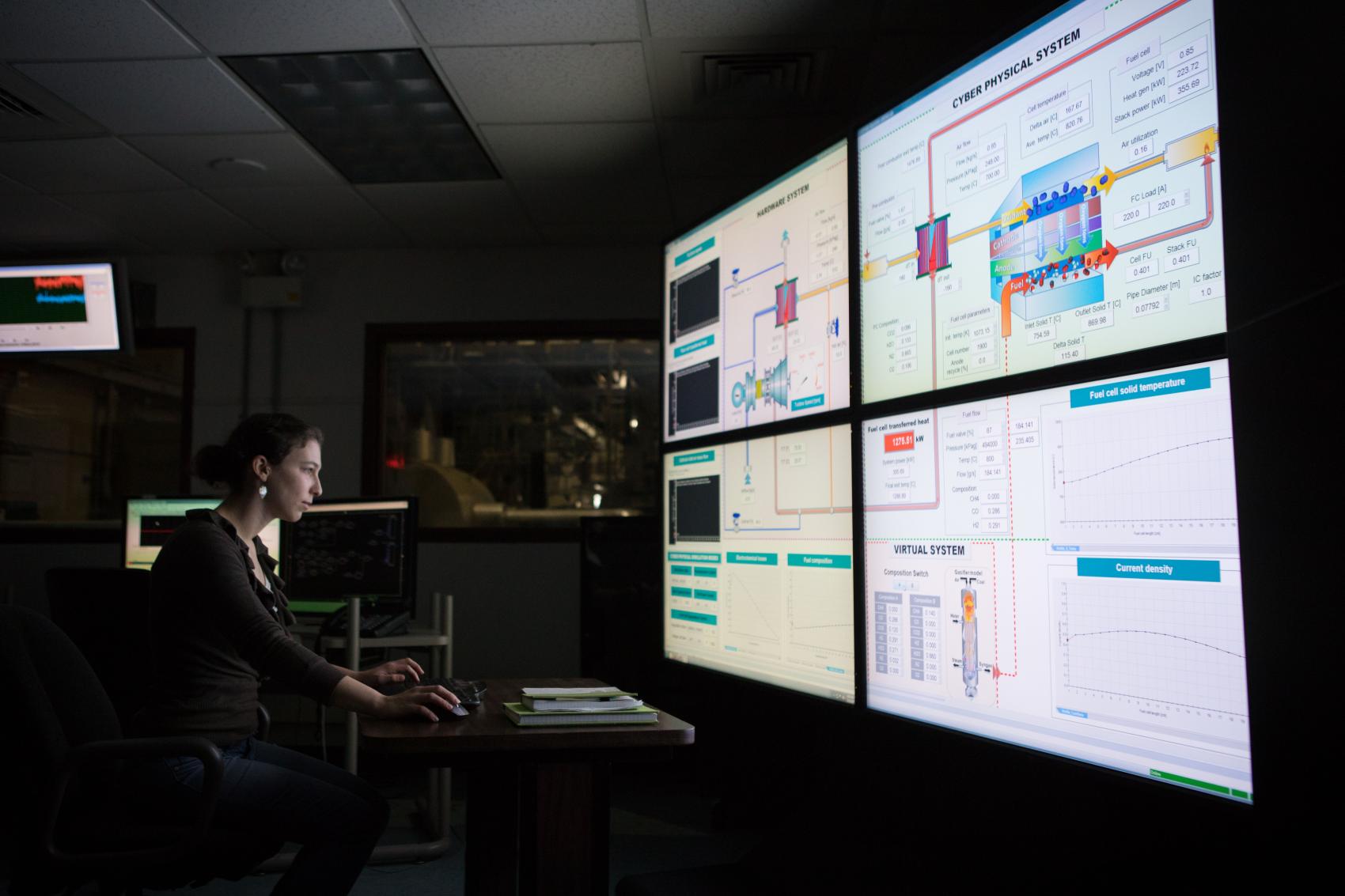Changes to the U.S. electricity industry are forcing a paradigm shift in how the nation’s generating assets are operated. Power plants, originally optimized as baseload resources, are being increasingly relied upon as load-following resources to support electricity generated from intermittent renewable capacity. This fundamental change to the operating and economic environment in which large-scale power plants function will persist beyond the next decade, and will require significant changes in operations, controls, and maintenance practices.
Our research on power plant monitoring and controls is focused on the near-term challenge of developing low-cost, easily implemented tools that aid in optimizing cycling operations by maintaining plant performance and system durability for industrial power systems. Ames National Laboratory's Division of Simulation, Modeling and Decision Science is working to develop effective, low-cost methods to continuously optimize existing plant control systems that can be used to optimize load following and cycling plant performance, and augment advanced condition-based monitoring systems, resulting in greater overall efficiency, lower carbon emissions, and reduced costs.
For general inquiries, please contact: Mark Bryden, 515-294-3891.
Current Research Portfolio
We are working to develop monitoring tools and advanced control strategies that can detect potential failures and can improve power plant performance of the existing fleet and new concept power systems. Our efforts are focused in four areas:
- Advanced Control Strategies
-
Generally, plant control systems are developed to support optimum performance (e.g., heat rate and emissions) at a single set of conditions, (i.e., full power operations). We are working to develop novel control strategies using self organization, agent-based learning, and multivariable control that can optimize plant controls on-the-fly. To date, we have successfully implemented and tested a set of these algorithms on a 150 kW lab-scale power system. The next step is to identify utility scale partners to test the feasibility of these algorithms on large systems starting with plant data and then moving to in-plant testing.
- Online System Identification
-
System identification algorithms are being developed to provide a condition monitoring system and optimized controllers by extracting process transfer functions in real time. In addition to updating the power system control parameters due to equipment wear over time, this approach has the potential to continuously optimize power plant control parameters to enhance dynamic stability, heat rate, and emissions for existing coal-fired power systems during ramping and cycling operations. These online system identification techniques have been developed and are being validated and refined using historical data, dynamic models, and a 150 kW laboratory-scale power system. Currently, we are seeking the opportunity to demonstrate the feasibility of online system identification in a utility-scale power plant.
- Real-time Machine Learning Tools
-
Real-time machine learning tools Machine learning tools and data analytic techniques can detect abnormal conditions in gas turbine combined cycle and coal-fired boiler power plants. The challenge is to implement these tools in real-time algorithms that identify emerging problems before they could Ames Laboratory Simulation Modeling & Decision Science normally be identified. Specifically, we are applying machine learning to identify surge and stall in gas turbine systems and tube leakage in hybrid fuel cell gas turbines power systems. Currently, we are looking for utility-scale partners willing to share plant data to extend our research in this area
- Cyber Physical Systems and Digital Twins
-
A digital twin is a digital replica of a physical entity that bridges the physical and virtual world, enabling information (i.e., data and other information artifacts) to be seamlessly shared between the digital/virtual model and the physical world (e.g., a power plant). Key to this is the integration of the dynamics and elements of both worlds based on the Internet of things (IoT). Within power systems, the goal is to provide an integrated platform that can monitor, explore, and guide plant design, operation, maintenance. Cyber physical systems seek to integrate portions of the physical world and virtual world together to enable the low cost and rapid detailed exploration, design, and engineering of complex systems at a high level of detail. Within power systems we are seeking to develop the concept of cyber physical energy system design to reduce the cost of development and time to deployment for advanced concept power systems as well as to enable the rapid exploration of new opportunities for existing plants within a changing energy world.

